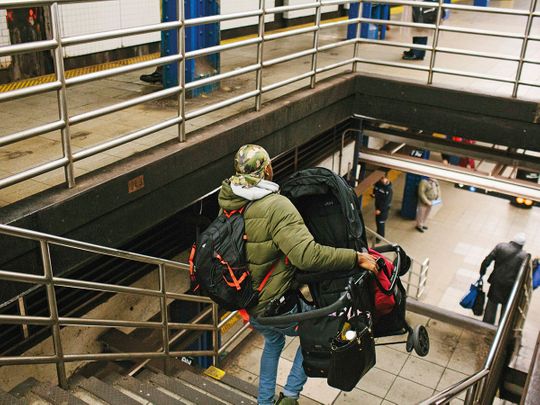
New York: Malaysia Goodson entered a Manhattan subway station on Monday night pushing a stroller.
Her one-year-old daughter, Rhylee, was nestled inside. Goodson, 22, of Stamford, Connecticut, had brought her along on a shopping trip to the city.
Like so many New York City parents, Goodson faced a familiar but perilous challenge: hauling her stroller and daughter down the steps of a station that, like most stops in the city’s creaking subway system, had no elevator.
As Goodson made her descent, she fell, tumbling down a flight of stairs and onto the subway platform at the Seventh Avenue station, at 53rd Street, officials said.
Her daughter survived the fall. Goodson did not.
Her death reverberated throughout New York City, among stunned parents who often traverse crowded subway stairs with strollers and among people who are disabled and regularly encounter an inaccessible transit system.
“Everybody who has been a parent or a caregiver knows that this is a problem,” said Christine Serdjenian Yearwood, the founder of Up-Stand, an organisation that has pushed to make transit more accessible for parents.
“I’ve had a lot of people write and say, ‘This could have been me',” she said.
Goodson was a doting parent and an outgoing person, her mother, Tamika Goodson, said. One of four children, she was raised in New York but moved to Stamford with her family nine years ago.
Mark Marchesani, who was her guidance counsellor at Westhill High School in Stamford, remembered Malaysia Goodson as a teenager who “had a tough shell” but was “a sweetheart.”
“She was the kind of kid that when you made her smile,” he said, “it felt like a real win.”
After graduating in 2015, her mother said, Goodson had big dreams. She worked for about a year at a day care centre in Stamford, and loved it. But she had also talked about becoming a security guard or a flight attendant.
Goodson’s daughter was the light of her life, her cousin, Ronshuana Anthony, said.
“Malaysia just gave so much of her self,” Anthony said, adding, “She’d give her last breath to her if she could.”
When emergency responders arrived at the subway station on Monday night, Goodson was unconscious and unresponsive, police said.
She was taken to the Mount Sinai West hospital, where she was pronounced dead.
Goodson’s daughter was found conscious and treated at the scene. She was reunited with her father and grandmother in the city and was doing well, Tamika Goodson said.
It was not clear whether Malaysia Goodson suffered a medical condition or if she was killed from the impact of the fall. The city’s medical examiner will determine her cause of death, officials said.
Shams Tarek, a spokesman for the Metropolitan Transportation Authority, which operates the subway, called the death “a heartbreaking tragedy” and said the agency would work with the police to investigate.
While officials are continuing to investigate the circumstances around Goodson’s fall, her death has shined a light on the lack of elevator service and accessibility issues that have long plagued the city’s subway system.
The station where Goodson fell does not have an elevator. Only about a quarter of the subway system’s 472 stations have elevators, and the ones that exist are often out of order.
One survey of subway elevator breakdowns found that, on average, each elevator breaks down 53 times a year.
When the elevators are functioning properly, they are often small, odoriferous and inconveniently positioned at the far ends of stations. That can make them frustrating for disabled subway riders who depend on them and an unappealing option for straphangers who do not.
“The subway system is not accessible for everyone, and that’s an environment the MTA should not allow,” Mayor Bill de Blasio said on Twitter. He was one of several politicians, including the City Council speaker, Corey Johnson, to call for a more accessible subway system.
A lawsuit filed in 2017 against the transit authority, which operates the subway, described New York’s subway system as one of the least accessible in the country and accused the agency of violating the federal Americans With Disabilities Act.
The case, which was joined by the Justice Department in 2018, is still active, according to Disability Rights Advocates, which is representing the plaintiffs.
The authority has been slow to add elevators to its sprawling system, which first opened more than a century ago. Washington’s subway, which was built in the 1970s and is much smaller than New York’s, has far more elevators.
Gov. Andrew M. Cuomo’s office, which called Goodson’s death a tragedy, responded to questions about the system’s lack of elevators with a statement saying that the transit agency “must make accessibility a priority.”












